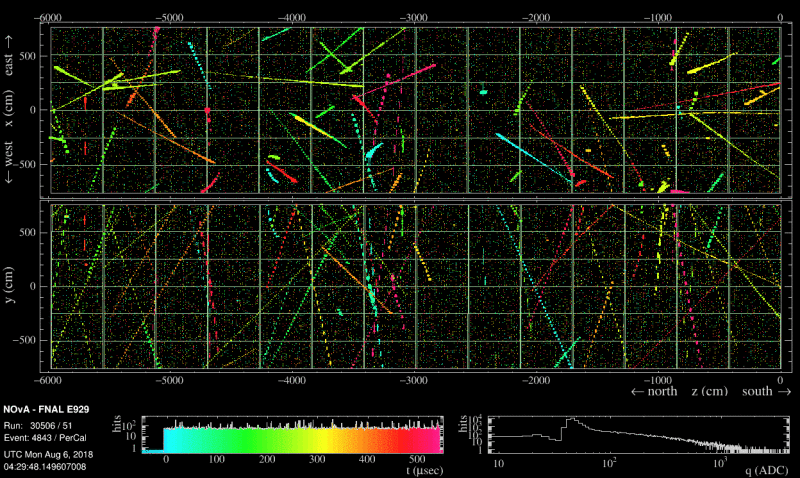Explanation: Cosmic rays from outer space go through your body every second. Typically, they do you no harm. The featured image shows some of these fast moving particles as streaks going through Fermilab's NOvA Far Detector located in Ash River, Minnesota, USA. Although the image updates every 15 seconds, it only shows cosmic rays that occurred over a (changing) small fraction of that time, and mostly shows only one type of particle: muons. The NOvA Far Detector's main purpose is not to detect cosmic rays, though, but rather neutrinos from the NuMI beam shot through the Earth from Fermilab near Chicago, Illinois, USA, 810 kilometers away. Only a few neutrino events are expected in NOvA per week, though. The NuMI / NOvA experiment is allowing humanity to better explore the nature of neutrinos, for example how frequently they change type during their trip. Cosmic rays themselves were discovered only about 100 years ago and can not only alter computer memory, but may have helped to create DNA mutations that resulted in, eventually, humans.
1999 2000 2001 2002 2003 2004 2005 2006 2007 2008 2009 2010 2011 2012 2013 2014 2015 2016 2017 2018 2019 2020 2021 2022 2023 2024 2025 |
Yanvar' Fevral' Mart Aprel' Mai Iyun' Iyul' Avgust Sentyabr' Oktyabr' Noyabr' Dekabr' |
NASA Web Site Statements, Warnings, and Disclaimers
NASA Official: Jay Norris. Specific rights apply.
A service of: LHEA at NASA / GSFC
& Michigan Tech. U.
|
Publikacii s klyuchevymi slovami:
cosmic rays - kosmicheskie luchi
Publikacii so slovami: cosmic rays - kosmicheskie luchi | |
Sm. takzhe:
Vse publikacii na tu zhe temu >> | |
